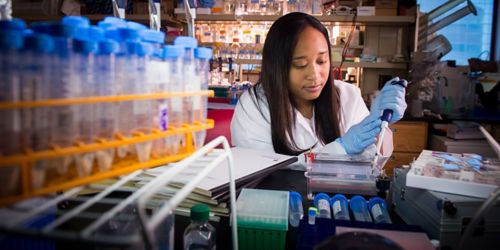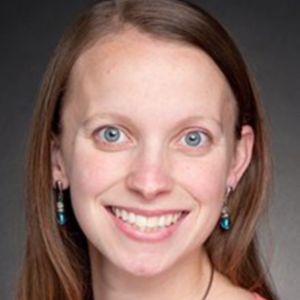St. Jude Family of Websites
Explore our cutting edge research, world-class patient care, career opportunities and more.
St. Jude Children's Research Hospital Home

- Fundraising
St. Jude Family of Websites
Explore our cutting edge research, world-class patient care, career opportunities and more.
St. Jude Children's Research Hospital Home

- Fundraising
Communicating science to tell the story of discovery

Effectively communicating science inspires our teenagers to become future investigators. When a scientist tells his story of discovery, it’s an opportunity to bring that young student into the world of the laboratory.
Communicating science has never been more important. Nearly half of all Americans express distrust in science. The St. Jude Science Amassadors Program aims to address this issue by connecting high school students to authentic stories of scientific discovery told by the scientists doing the work. In doing so, we hope to communicate two things:
- How research and investigation can lead to cures
- How science can change their lives
Effectively communicating science inspires our teenagers to become future investigators. Telling the story of discovery and uncovering the mystery of a disease or disorder is a scientist’s opportunity to bring that young student into the world of the laboratory.
Sharing science in the community
As manager of the St. Jude Cancer Education Program, I saw an opportunity for St. Jude to step up as a community partner when schools went virtual because of the onset of the COVID-19 pandemic. We reached out to local partner science teachers to find ways we might support science teachers and science education for high school students during the transition to virtual learning.
In response to teacher feedback, we launched the St. Jude Virtual Science Journal Club to connect high school juniors and seniors with St. Jude scientists. We thought it would be a fertile ground for researchers to share their work and possibly encourage students to pursue a career in biomedical research. The initial launch demonstrated the clubs had potential to excite students’ interest in biomedical research, but that the delivery needed a bit of tweaking.
Communicating science needs to be taught
From the beginning, we noticed one issue was the key to the success of this program: Getting scientists to rethink how they describe and talk about their work.
We discovered that scientists need a little help communicating science in a way that high school students can understand. To address this need, we designed The St. Jude Science Ambassadors Classroom, a four-part seminar series to show scientists compelling ways for them to talk about what they do. The result, the St. Jude Virtual Journal Clubs couples science communication training for advanced level scientists with community outreach and engagement. That way, everyone is learning.
Training sessions address these four components:
- Storytelling
- Reducing jargon
- Simplifying for understanding
- Engagement techniques for students in a virtual format.
Once they have completed training, we plan to begin the program with virtual classrooms of high school juniors and seniors. The program will launch this spring in Memphis, Tennessee, and Springfield, Missouri, schools. In time, it could expand and engage students nationally.
Science is fascinating. But many times, talking about it involves intimidating language that can alienate many youths. This program is a way to create interest that will both motivate more students to pursue scientific careers and engage our scientists to help our community.






